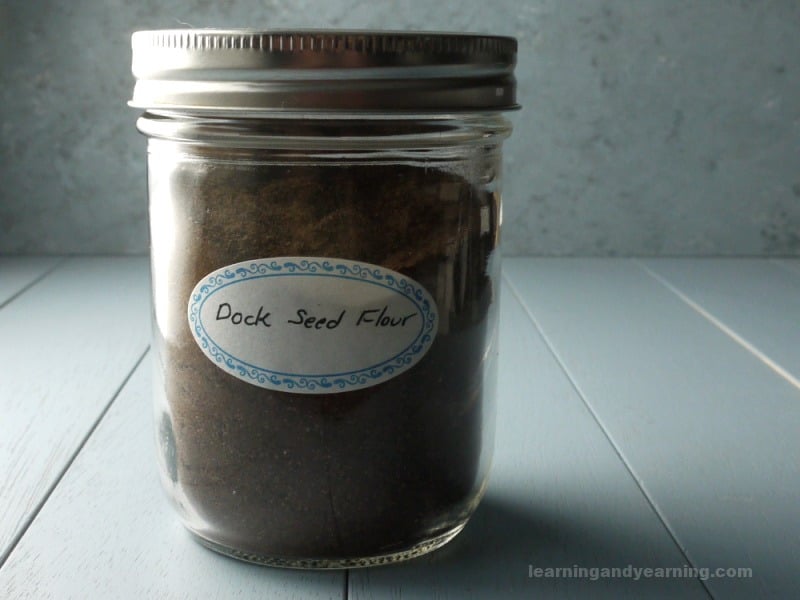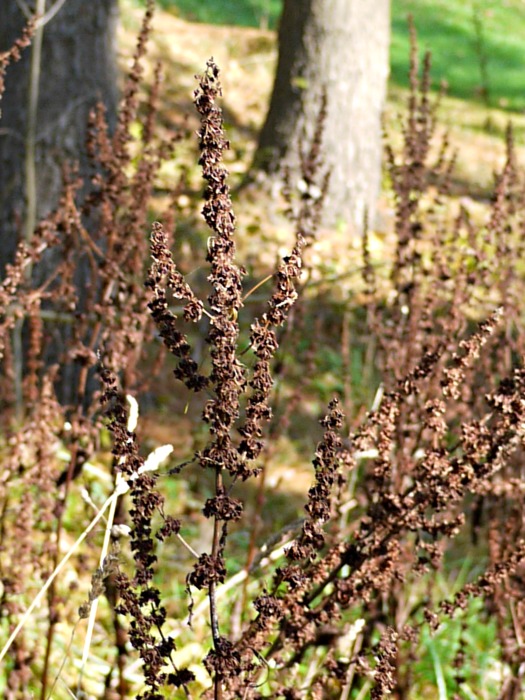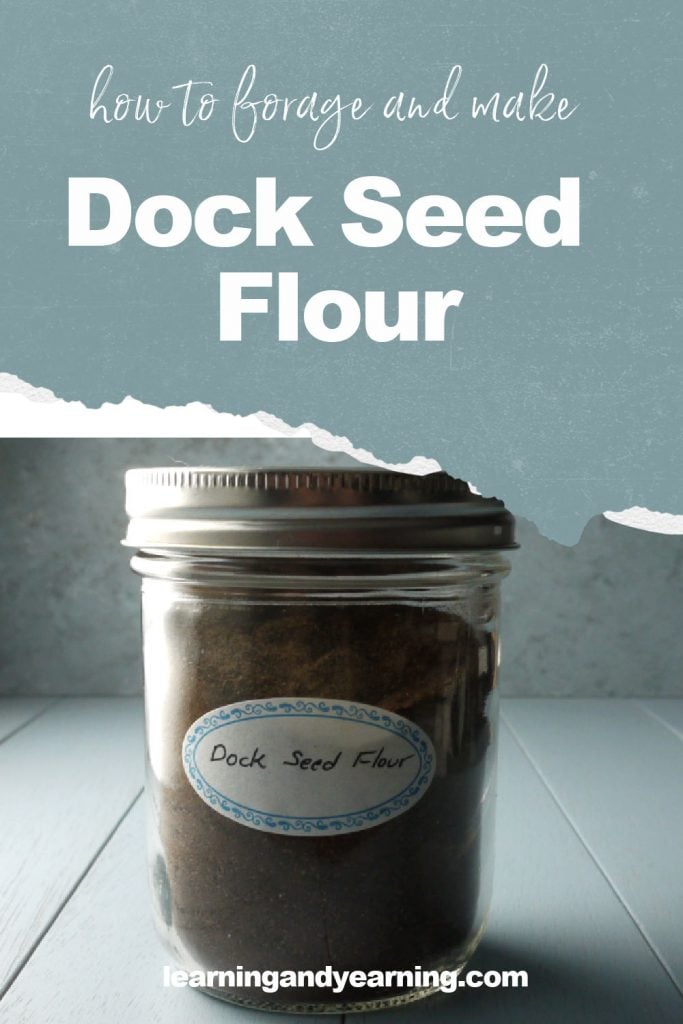Dock, a common plant often foraged for its leaves in the early spring, is found along roadsides and fields all over the U.S. and Canada. Its stalk, root, and seed are also edible. The most common species are Rumex crispus ( the biennial Curly dock), and R. obtusifolius (the perennial Bitter or broadleaf dock).
The edible seed is easy to harvest, but many people avoid collecting it because it can be difficult to process into dock seed flour. I thought that, too, until I learned a trick which makes it very easy.
How to Harvest Dock Seed
Dock goes to seed in late summer or early fall and produces thousands of seeds on each plant. It can even be found throughout the winter.
Gathering the seed is simple; hold on to a stalk with one hand while gently pulling the seeds off with the other. You’ll be able to gather several cupfuls in a matter of minutes.
And don’t worry about taking too much; dock is quite abundant and invasive.
How to Make Dock Seed Flour
It is common to remove the husk from the seed, and that is certainly a tedious task. Instead, I use both the seed and husks to make dock seed flour. The end result is a high fiber flour.
Once you’ve gathered your seeds, the first step is to place them on a cookie sheet or board outside in the sun, allowing insects to scatter.
Next, roast the seed at 350°F for 4 – 5 minutes. This gives the seeds a wonderful, nutty flavor, and goes a long way in making the seed easier to grind.
After cooling, the last step is to grind the seed. I like using my Nutri-Bullet Blender; a coffee grinder can also be used. Be sure to grind to a fine consistency.
5 cups of seed and husks will make about 1 cup of roasted and finely ground flour. Keep your flour refrigerated until ready to use.
Even with a fine grind, dock seed flour is heavy. Therefore, I like to use half dock seed flour in my recipes, and for the other half, a lighter flour. Dock flour is especially delicious in chocolate recipes, like these Dock Seed Brownies.
Other Foraging Posts You’ll Love
Roasted Dandelion Root Coffee Ice Cream
Sumac Lemonade Fermented with Wild Yeast
Oven Roasted Potatoes on a Bed of Pine Needles
Thank you for visiting Learning And Yearning. May "the LORD bless you and keep you; the LORD make his face shine upon you and be gracious to you; the LORD turn his face toward you and give you peace." Num 6:24-26





Josie123 says
What a unique article and great tips for harvesting dock! This is the first time I have heard of any of this. I’ll have to keep an eye out for it. I’m always so amazed at what we used to know that we don’t know now in our culture. It’s herbalists like you that keep this knowledge alive. Thanks
Susan Vinskofski says
You’re welcome; thanks for stopping by!
Nathan says
Yeah it is and with the bible reading at the end.
What is all the scare about dock seeds being poisonous though?
Curious says
Is there any concern for ingesting too much oxalic acid through the seeds?
Susan Vinskofski says
Hi Curious, I would say that there is the same concern as with eating rhubarb. If you are oxalate intolerant I would certainly stay away.
monica says
On average how many cups of seed & chafe will one plant produce? in a tropical climate like Hawaii how many times per year will it produce a crop of seeds; if I grow it in my garden where it will get optimum water, care & compost? which variety of dock produces the least bitter seeds and the most plentiful seeds? also is it true that some varieties of dock seed can give the runs if all dock flour is used in a baked good? can dock seed flour be stored in the freezer if so for how long before it begins losing its nutritional value? also can seeds & chafe be ground in a food processor? i’m glad to here that I don’t need to buy a flour grinder.
Susan Vinskofski says
Hi Monica, thank you for stopping by. I’m am sorry, I am not as detail oriented as answers to some of your questions would require. Dock is quite abundant here, so I just harvest as needed. I am only familiar with it in our NE US climate where it produces seed in the fall. Please research to see if it is already growing in Hawaii. I would NEVER plant it, as it is VERY invasive. Go slow when consuming at first to see how your body reacts; yes, it can cause digestive upset because it is so high in fiber. It can be frozen for a year or possibly more, I don’t have specific information.
gudrun b says
I was just taking my seeds off the stems – had them hanging upside down in brown paper bag and it is time to clean up – make room for new… so I went searching. Thanks for the info, especially the roasting 🙂
Susan Vinskofski says
You’re welcome; thanks for stopping by!